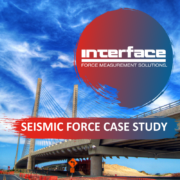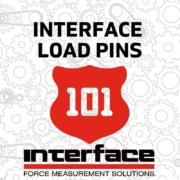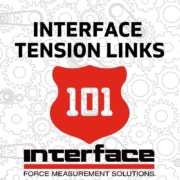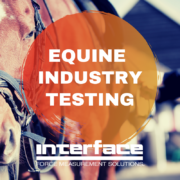Measurement Solutions for Harnessing Aquaculture Innovation
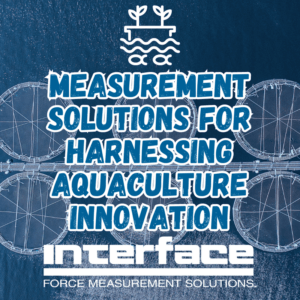 Aquaculture is pivotal in meeting the escalating global demand for seafood while addressing environmental concerns and wild stock limitations. As this maritime industry burgeons growth for all edible aquatic organisms, regardless of whether they inhabit freshwater or saltwater environments, innovative solutions become imperative for sustainable development.
Aquaculture is pivotal in meeting the escalating global demand for seafood while addressing environmental concerns and wild stock limitations. As this maritime industry burgeons growth for all edible aquatic organisms, regardless of whether they inhabit freshwater or saltwater environments, innovative solutions become imperative for sustainable development.
Interface offers sensor-based products that, by design, can aid in advancements, research, and modernizing various facets of aquaculture. Interface load cells are used in applications that regulate harsh maritime situations, such as fish farm mooring lines, salmon cage monitoring, hatcheries and feed management structures, and scales used in real-time seafood weighing.
With an estimated worth of $200B, the aquaculture industry is a significant global blue economy force and a crucial source of sustenance worldwide. Interface recognizes the pressing need for precise measurement solutions to navigate the sector’s challenges and bolster its growth.
Interface’s collection of submersibles, subsea and ruggedized load cells, load pins, tension links, and instrumentation is meticulously designed to cater to diverse applications, including aquaculture applications. These cutting-edge tools empower aqua culturists to make informed decisions and drive efficiencies.
Interface’s load cells can wirelessly transmit data through underwater applications and harsh weather conditions. These load cells can survive through underwater submersions at different capacities and still be able to relay information to those at the surface level.
Aquaculture Applications Leveraging Interface Products
Aquaculture aims to restore habitats and wild stocks and rebuild endangered species and populations. It also aims to cultivate aquatic plants for food, pharmaceuticals, and other purposes. Aquaculture depends on critical line monitoring at sea. Mooring lines use Interface wireless load cells for tension monitoring in anchor lines. The sensor data enhances structural safety integrity, especially in adverse weather.
Commercial Fishing Operations
A commercial fishing operation wants to measure the force tension of the wire fishing rope connected to the fishing cage or net when their vessel goes to catch. They want to ensure the wire rope is strong and safe enough to hold the maximum capacity of fish caught in the cage or net. Interface’s WTSTL Wireless Tension Link Load Cells are attached between the end of the cable and the end that hooks onto the fishing net. This tension link measures the forces of the full net of fish and heavy loads at maximum capacities. The data is transmitted to the WTS-BS-1-HS Handheld Display for Single Transmitters. You can see the full application here: Commercial Fishing Wire Rope Testing.
Here are some additional application highlights that use different load cells and instrumentation to support success in aquaculture.
- Aquaculture Structural Testing: The integrity of aquatic structures, including nets, cages, tanks, large farms, and large civil engineering projects, use precise force measurement from load cells.
- Cleaning Systems and Equipment: Sensors, such as miniature stainless steel load cells, can assist in optimizing cleaning processes while safeguarding delicate fish nets. Ensuring effective biofouling removal without damaging fish nets is an important process that requires quality measurement controls.
- Biomass Research: Estimating fish stock biomass to inform feed management and harvest predictions is an ongoing measurement requirement. Accurate weight measurement using sensor technologies aids in managing feed costs and predicting harvest yields.
- Harvesting and Food Production: Ensuring precise feeding schedules in aquaponic systems can depend on force measurement solutions. Wireless load cells and instrumentation can enhance efficiency and precision in aquaculture operations.
- Feeder System Monitoring: Tracking feed dispensation for optimal feeding effectiveness and monitoring fish health is another way to utilize load cell devices. Balancing nutrient delivery for sustainable aquaponic systems requires quality measurement tools. These devices leverage data for proactive health management and stock optimization in fresh and saltwater farms.
- Scales: Providing accurate weight measurement in the water and on docks for various aquaculture applications.
- Recirculating Aquaculture Systems (RAS) Tank Monitoring: Facilitating biomass estimation and growth monitoring. Using load cell technology for precise weight measurement for successful stock management.
- Pump Monitoring: Force measurement devices provide great tools for optimizing pump performance and detecting anomalies by promptly detecting pump malfunctions or blockages.
- Aquaponics: Monitoring feed distribution and nutrient balance for sustainable cultivation needs good sensor-based technologies to sustain harsh environments.
- Environmental Remediation: Addressing environmental concerns through data-driven approaches is another application use case for load cells.
Interface’s force measurement solutions emerge as indispensable tools in propelling the aquaculture industry towards sustainability and efficiency. Aquaculture engineers, researchers, and managers can navigate challenges, optimize operations, and pave the way for a thriving future by harnessing the power of precision measurement.
ADDITIONAL RESOURCES
Maritime Measurement Solutions for Onshore and Submersible Applications
